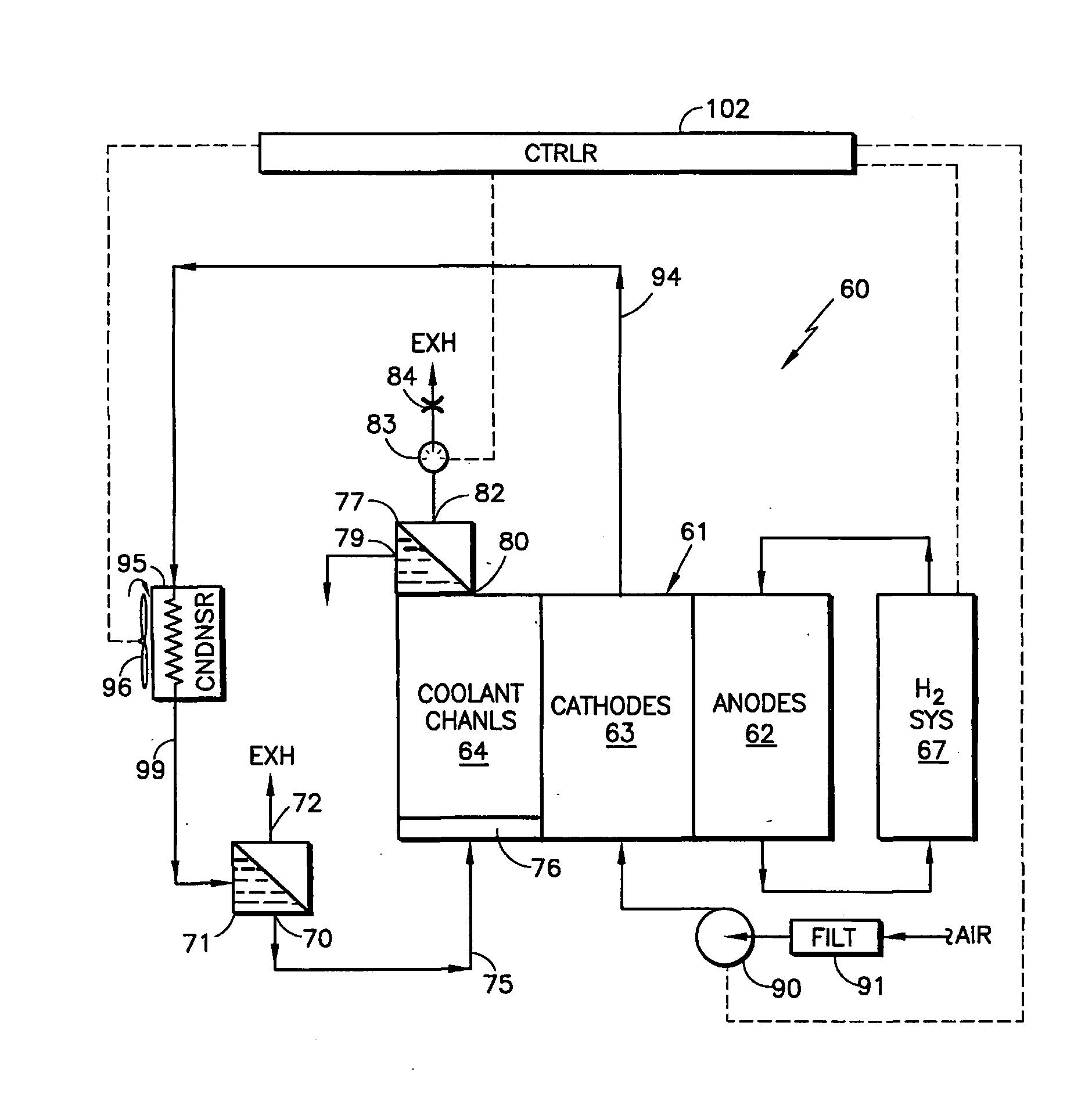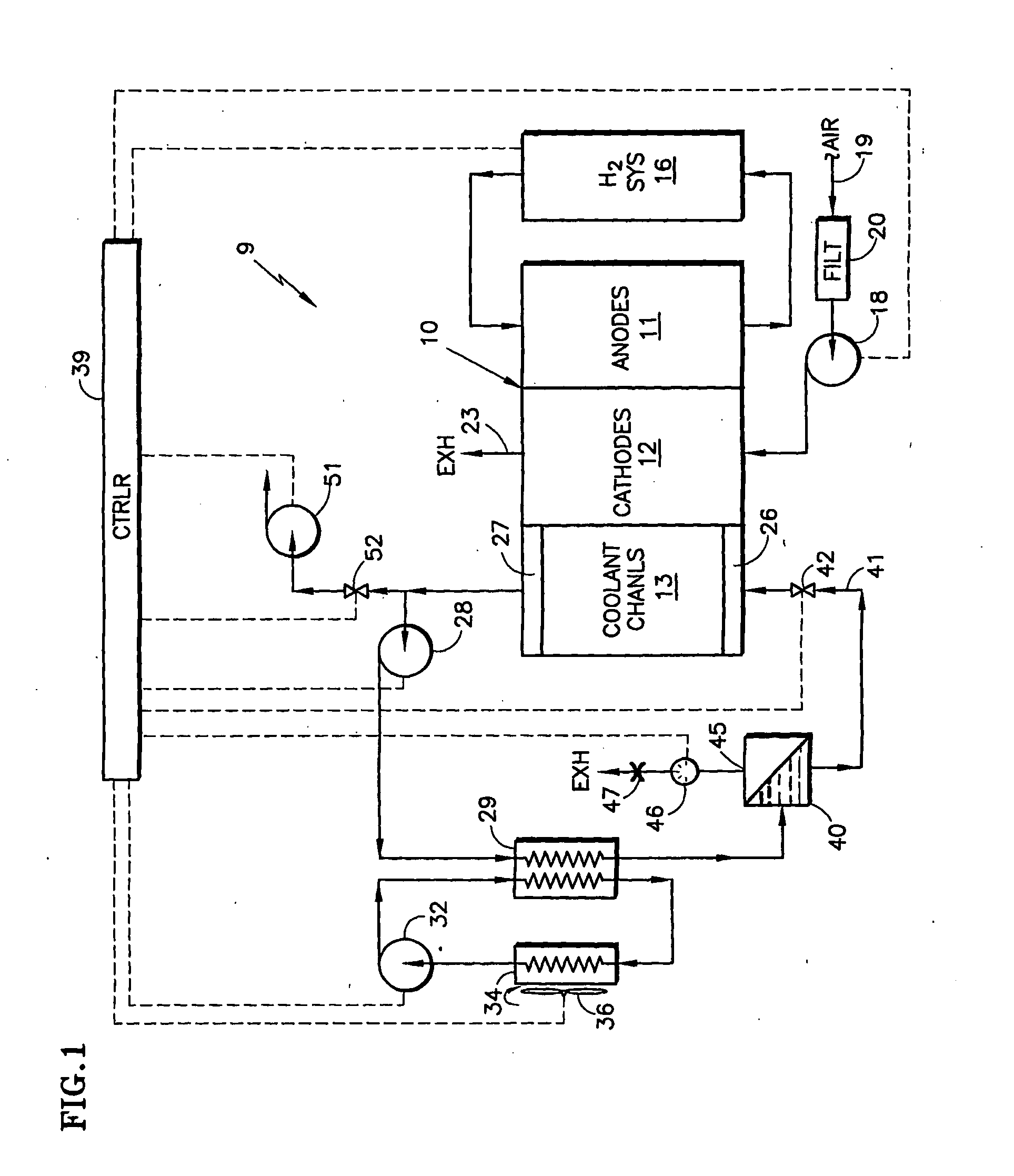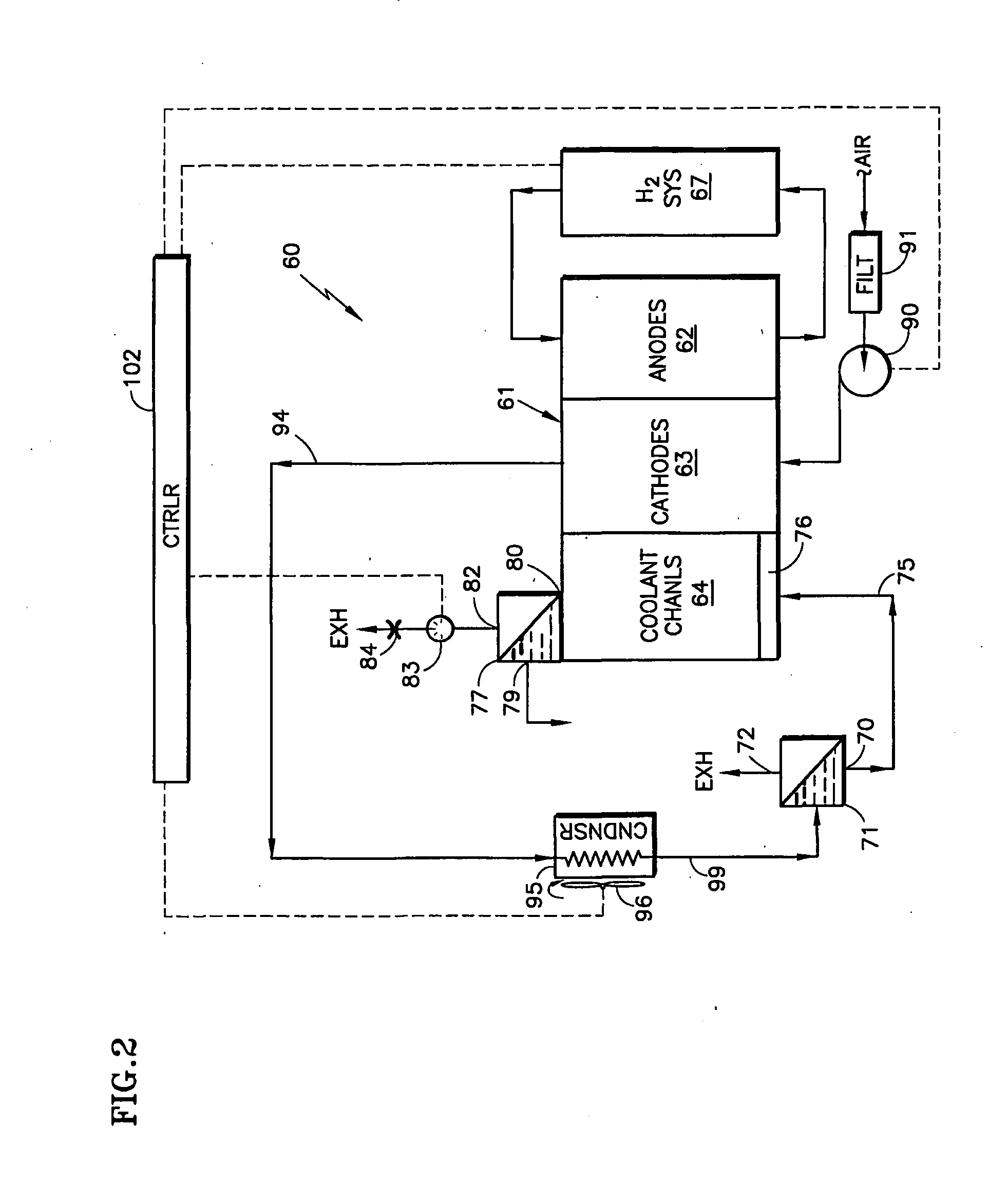Response to Ingestion of Gas Into Fuel Cell Coolant
a technology of fuel cell and coolant, which is applied in the direction of fuel cells, electrochemical generators, electrical devices, etc., can solve the problems of reactant starvation, possible failure, and dryout of the proton exchange membrane, so as to improve the power of the pem fuel cell, the effect of preventing irreversible damag
- Summary
- Abstract
- Description
- Claims
- Application Information
AI Technical Summary
Benefits of technology
Problems solved by technology
Method used
Image
Examples
Embodiment Construction
[0010]Referring to FIG. 1, a fuel cell power plant 9 includes a fuel cell stack 10 having anodes 11, cathodes 12 and coolant channels 13. The anodes 11 receive hydrogen from a hydrogen system 16 which may either supply a hydrogen-rich reformate gas or substantially pure hydrogen (such as commercial-grade hydrogen). There may be a fuel recycle loop and purging of the fuel channels, all as is conventional, the details of which do not affect the present invention.
[0011]In this embodiment, the cathodes 12 receive (as oxidant reactant gas) air from a pump 18 that is fed from ambient air 19 through a filter 20, in a conventional way. After passing through the oxidant reactant gas channels of the cathodes 12, the air is expelled to exhaust 23.
[0012]When the fuel cell stack is operating, water is continuously circulated through the coolant channels 13, from a coolant inlet 26 through the channels in each of the fuel cells, and thence through a coolant outlet manifold 27 to a coolant pump 28...
PUM
| Property | Measurement | Unit |
|---|---|---|
| pressure | aaaaa | aaaaa |
| hydrophilic | aaaaa | aaaaa |
| relative pressure | aaaaa | aaaaa |
Abstract
Description
Claims
Application Information
 Login to View More
Login to View More - R&D
- Intellectual Property
- Life Sciences
- Materials
- Tech Scout
- Unparalleled Data Quality
- Higher Quality Content
- 60% Fewer Hallucinations
Browse by: Latest US Patents, China's latest patents, Technical Efficacy Thesaurus, Application Domain, Technology Topic, Popular Technical Reports.
© 2025 PatSnap. All rights reserved.Legal|Privacy policy|Modern Slavery Act Transparency Statement|Sitemap|About US| Contact US: help@patsnap.com



